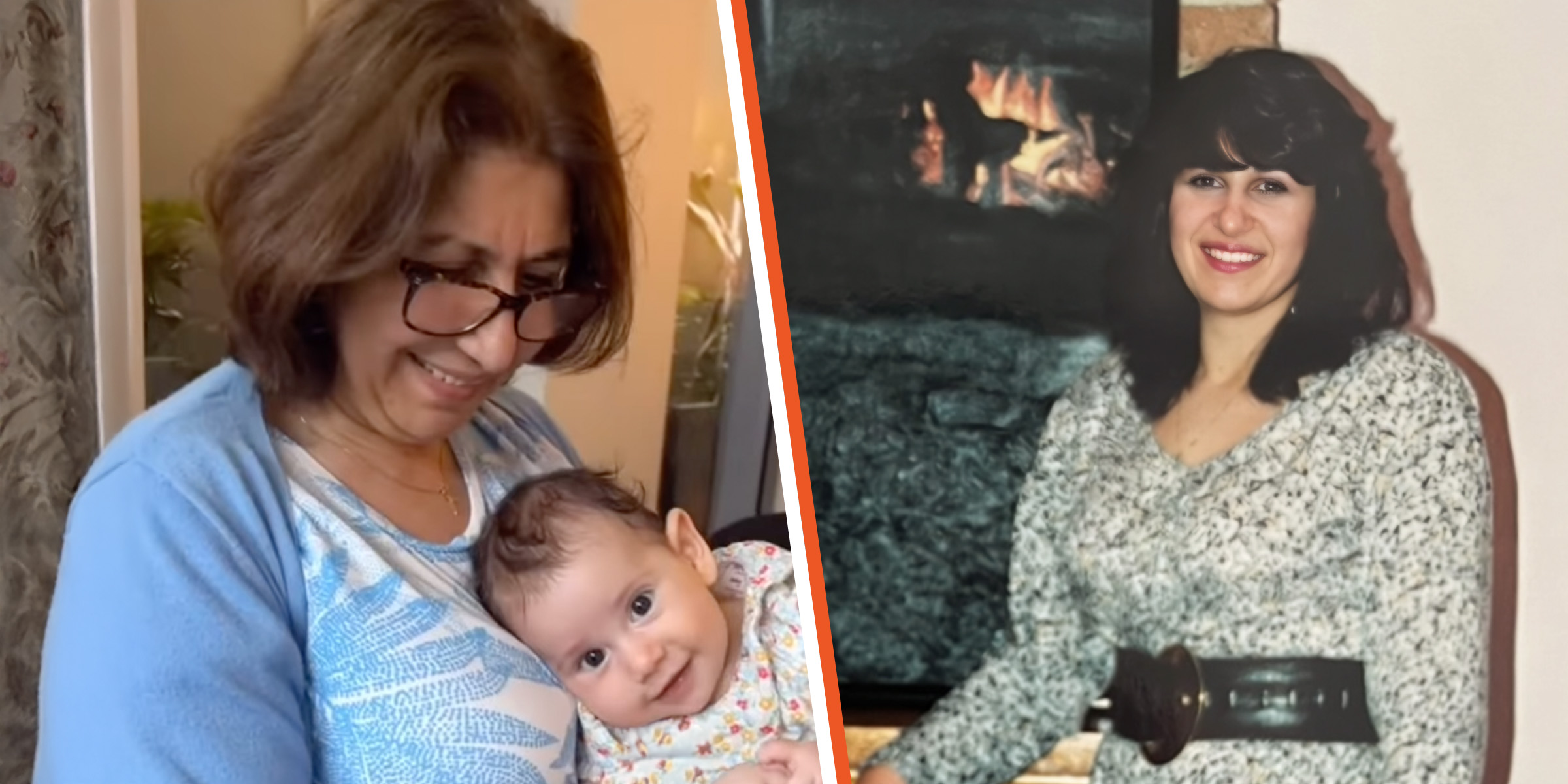
A 59-Year-Old Was Unloading the Dishwasher When Her Daughter Noticed Common Symptoms – It Turned Out to Be Rare Dementia
A woman is now grieving the person her mother used to be, now that she's living with a rare form of dementia. To keep her memory alive, the loving daughter has carried on her legacy by embracing a creative form of expression that her mother once turned to.
A simple household routine became a moment of concern when a daughter noticed her mother acting strangely in the kitchen. What started as a silverware mix-up turned out to be the first clue in a heartbreaking diagnosis that would change their family forever.
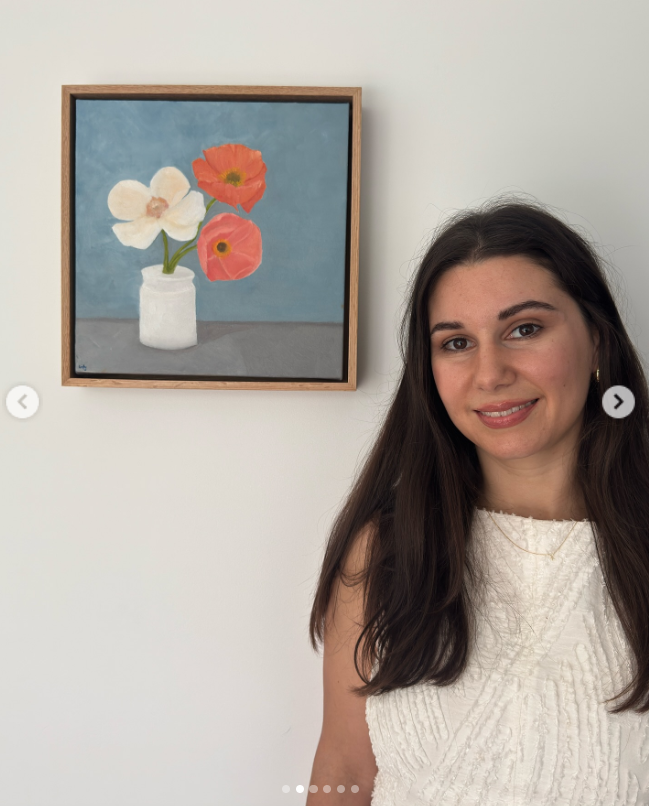
Kristy Adler posing next to one of her paintings in a post dated April 27, 2025 | Source: Instagram/kristyadlerart
The Tell-Tale Signs
In 2020, while she and her husband stayed with her parents in Sydney, Australia, during a bathroom renovation, Kristy Adler began noticing unusual behavior in her mother. One day, while seated at the dining room table watching her mother, Susan, unload the dishwasher, Kristy sensed something was wrong.
Plates were stacked on bowls, teaspoons were mixed with tablespoons, and small forks were grouped with larger ones. It was jarring, especially since Susan had always been nearly obsessive about neatness.
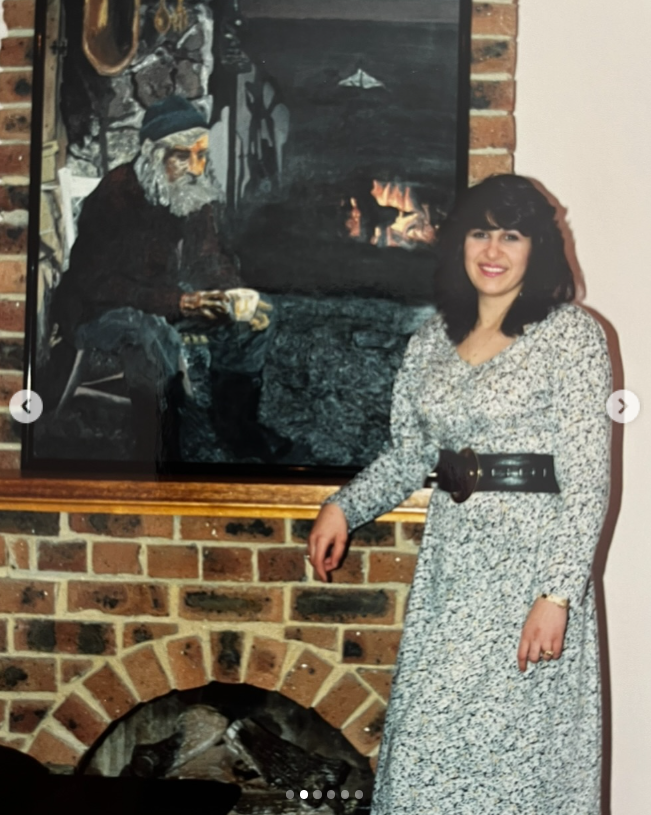
Kristy Adler's mother posing next to one of her paintings in a post dated April 15, 2025 | Source: Instagram/kristyadlerart
When Kristy asked her about it, her mother snapped, "I'm so tired of worrying that much about everything. I don't care anymore." Other warning signs started to appear. Once a confident driver, Susan stopped going out at night because all she could see were the glaring headlights, not the road itself.
At home, she would misjudge distances and accidentally knock over wine glasses at dinner. Her emotional reactions also began to shift. Kristy and her brother had long teased their mother, lovingly calling her the "patsy of the family."
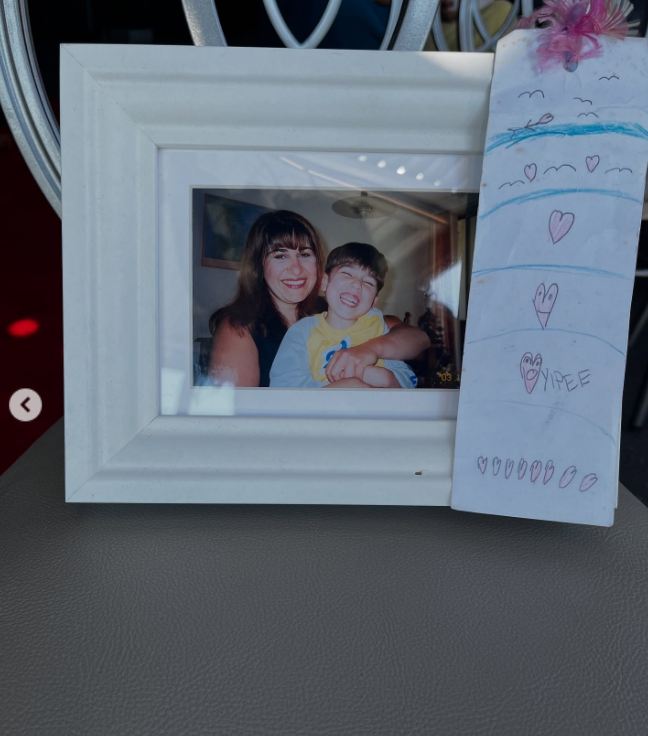
A framed picture of Kristy Adler's mother with her brother in a post dated March 16, 2025 | Source: Instagram/kristyadlerart
But jokes that once made her laugh now brought her to tears. After one particularly emotional moment, Kristy asked if something else was bothering her. Her mother quietly muttered, "Everyone picks on me." Concerned, her daughter scheduled a visit to the general practitioner (GP).
Susan's Initial Diagnosis
The doctor administered a cognitive test, asking Susan to count backward by sevens from 100. When prompted to draw the clock, she turned to her daughter and asked, "Is 12 at the top?" That hesitation was chilling.
Susan had once been a gifted artist who loved painting and drawing, but now she couldn't even manage a simple circle. She failed the test. Concerned, Kristy's father took her to a neurologist, who quickly ordered a brain scan. What they found was devastating.
Though Susan was only 59, the specialist said her brain resembled that of an 80-year-old. The diagnosis was early-onset Alzheimer's disease, typically identified before age 65.
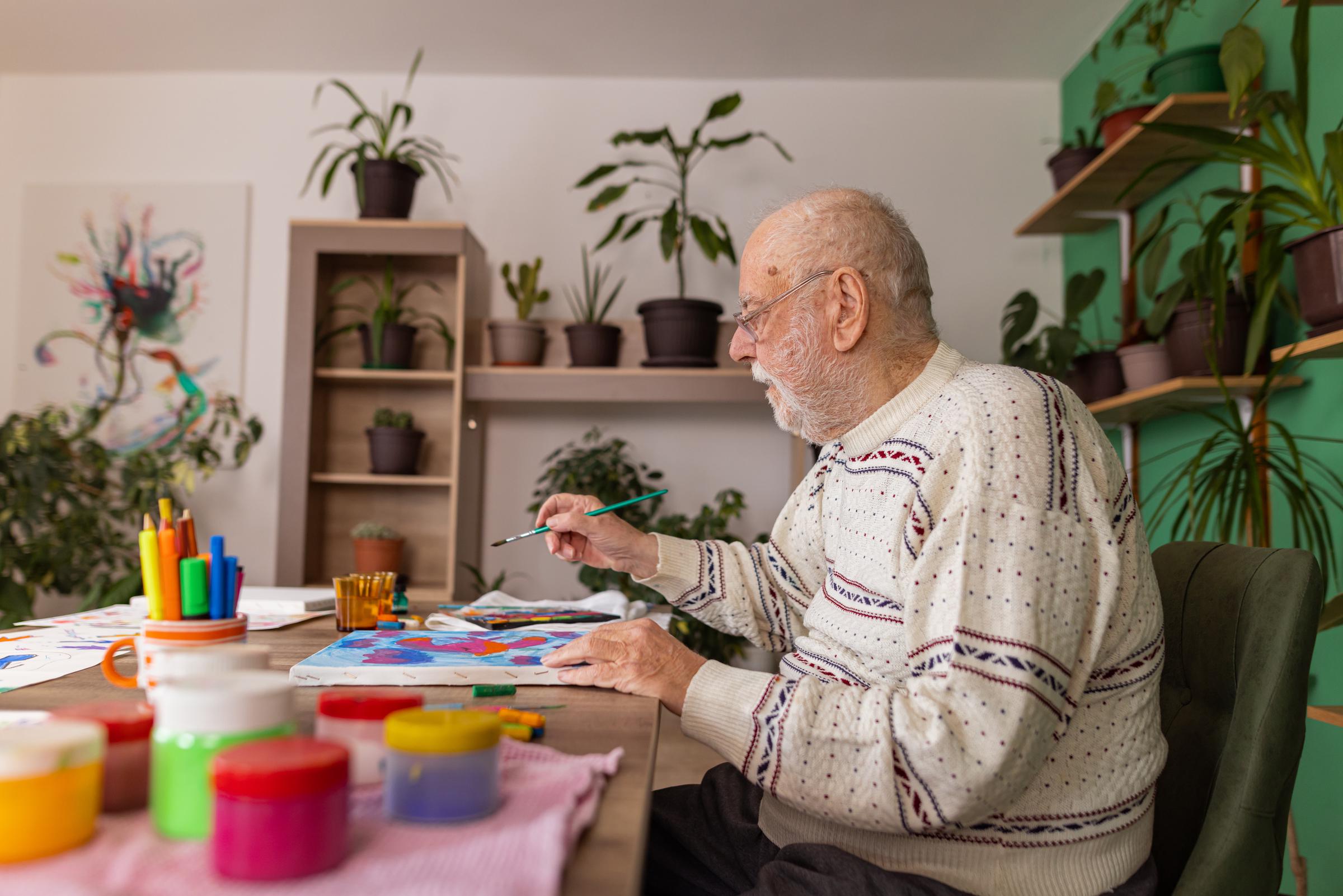
A senior man working on painting in an art class for individuals with dementia | Source: Getty Images
Kristy, who had done her own research, was stunned. There was no known genetic history on her mother's side. The diagnosis didn't make sense, at least not yet. But as Kristy watched her mother sit in her chair, consumed by anger, confusion, and a quiet, crushing defeat, it became impossible to deny the reality.

A distressed elderly woman solving sudoku puzzles at home | Source: Getty Images
Amid the darkness, a light emerged. The same year she moved in with her parents, Kristy discovered she was pregnant. When she shared the news, her parents were moved to tears. The arrival of baby Greta became a rare joy for Susan.
The bond between grandmother and granddaughter formed quickly. However, Kristy couldn't leave them alone together, as Susan's condition had become too unpredictable. There were still moments of love, but they were tinged with sadness.
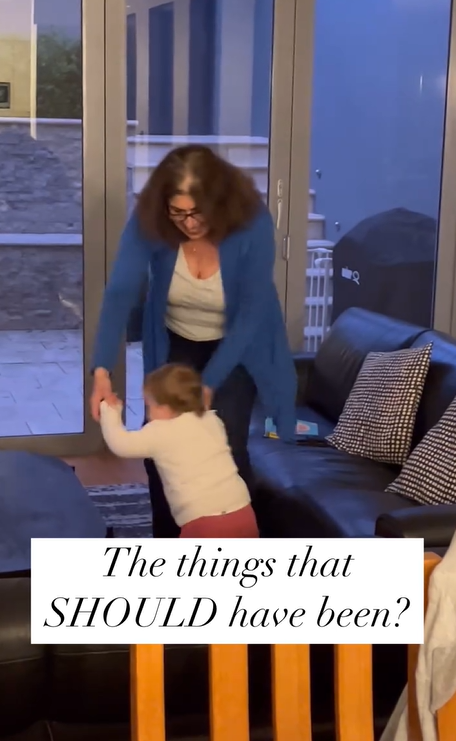
Susan playing with her granddaughter in a post dated March 2, 2025 | Source: Instagram/kristyadlerart
Susan could no longer read stories or sketch with her granddaughter. And although her eyes still sparkled with affection, the decline was unmistakable. Even so, Kristy couldn't shake a gut feeling that something about the diagnosis still didn't sit right.
A More Direct Diagnosis and Susan's Rapid Decline
Four months after the initial diagnosis, Kristy took her mother to the Brain and Mind Centre at Sydney University. There, a geriatrician confirmed what Kristy's instincts had already suggested, that Susan's condition wasn't just Alzheimer's.
She was diagnosed with posterior cortical atrophy, a rare form of Alzheimer's that affects cells at the back of the brain and slowly erodes a person's visual awareness. This diagnosis explained her mother's issues with driving and depth perception.
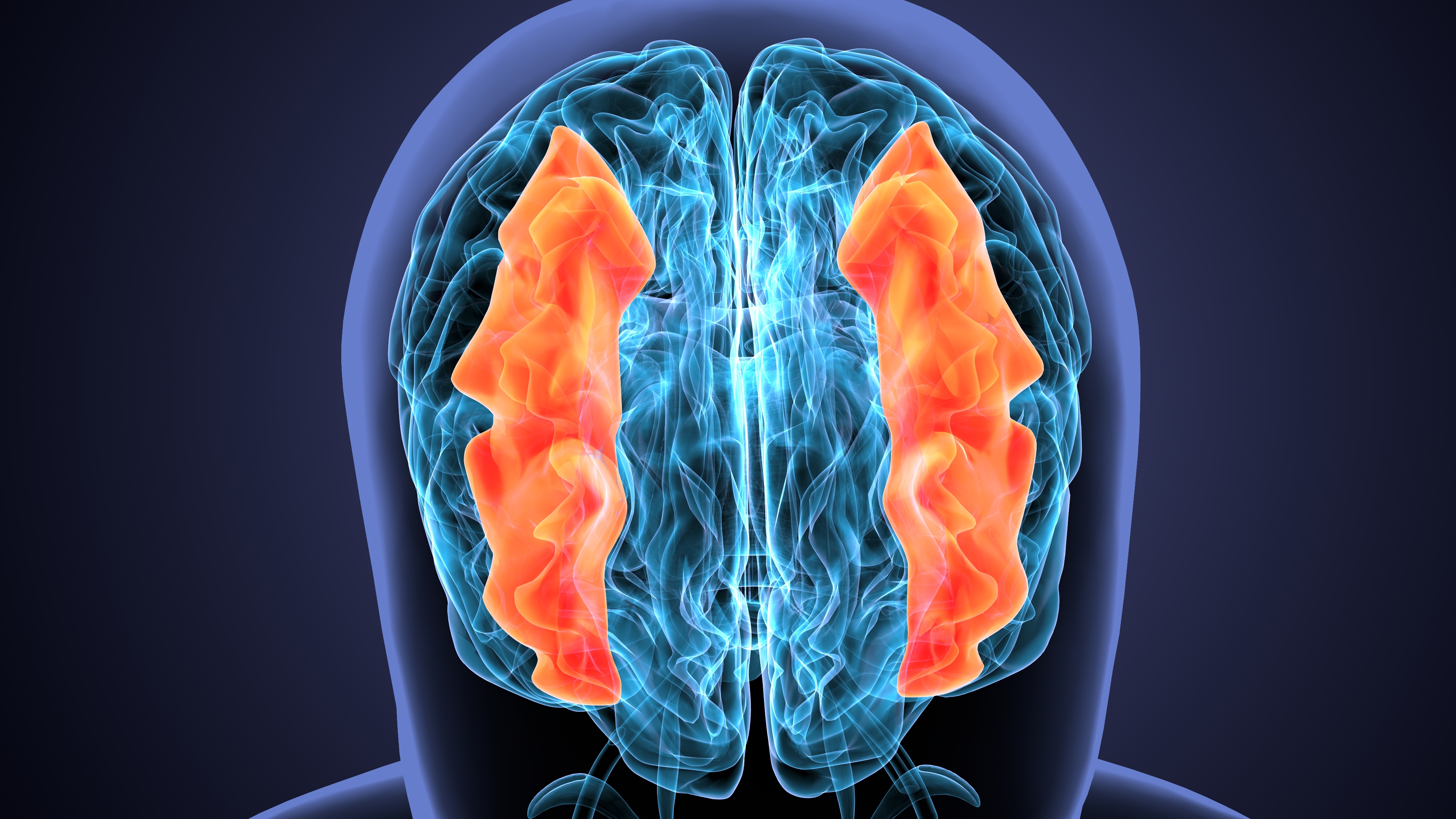
A 3d image of the human brain's intersection anatomy | Source: Getty Images
The prognosis was uncertain as the doctors said she might live another five years or possibly 20. But by the time four years had passed, and in 2024, when Kristy wrote about her mother's condition, Susan was already in a care facility and unable to move.
The five-year estimate, heartbreakingly, had been accurate. Two years before her mother moved into the care facility, Kristy became pregnant again. Wanting more space, she and her husband bought her parents' home so they could all live under one roof. For 18 months, three generations shared the same space.
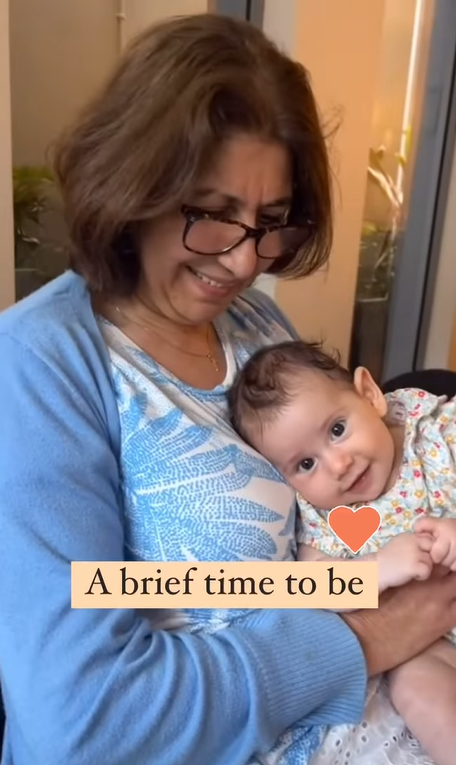
Susan cuddling her granddaughter in a post dated May 11, 2025 | Source: Instagram/kristyadlerart
Although it was difficult, Kristy felt grateful for the time with her mother. After her second baby was born, her husband returned to work, leaving her at home to care for a newborn, a toddler, and her mother, who was rapidly deteriorating.
Some days were overwhelming. Susan needed help tying her shoes, but couldn't understand why her daughter wasn't responding instantly. Just a few months earlier, she had still been going to local markets with friends. Soon enough, she was bedridden and in full-time care.
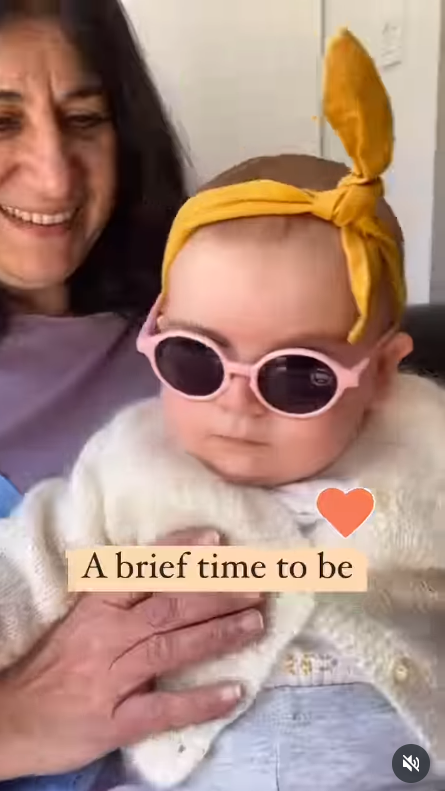
Susan with her granddaughter during good times | Source: Instagram/kristyadlerart
Kristy's Struggles with Motherhood and an Ailing Mom
Balancing new motherhood with the slow loss of her mother was deeply painful. "Losing your mum to dementia while also becoming a mother is so cruel and unfair," Kristy confessed. The grief was isolating and persistent.
She had hoped for her mother's wisdom and comfort during the chaos of raising children. Instead, she grieved the parts of Susan that were slipping away, her hugs, her laughter, and even her home-cooked meals.
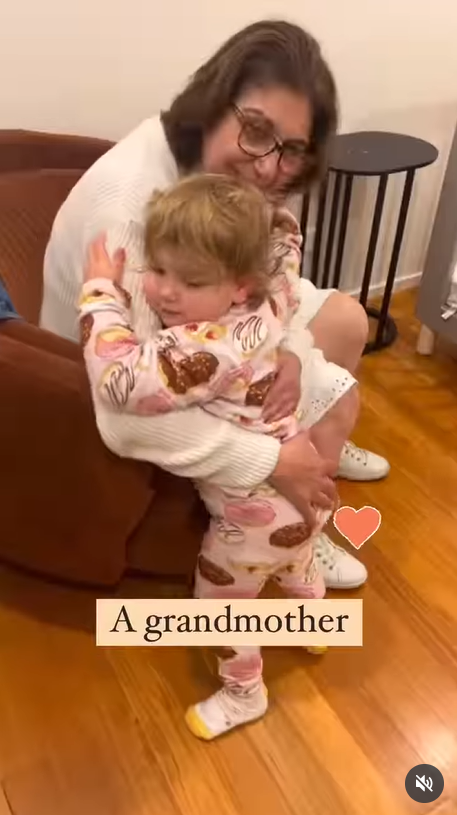
Susan hugging her granddaughter | Source: Instagram/kristyadlerart
Her days became a blend of joy and sorrow. She revealed, "I'm constantly torn between the joy of new beginnings while mourning the loss of my mum as I knew her." Kristy wished her daughters could have met the woman Susan used to be, someone who read stories, painted freely, and laughed deeply.
After moving to the facility, Susan needed help with everything, including eating, bathing, and dressing. Visiting her felt like living through the same goodbye, again and again. Kristy shared, "She is a shell of her former vibrant self, bedridden and barely able to remember her own name, let alone mine or my daughters'."
Susan's daughter mourned quietly, missing their coffee chats, inside jokes, and silly phone calls. During visits, Susan still recognized the people around her as loved ones, but Kristy could never be sure if her mother truly knew she was looking at her daughter. "And that kills me," she admitted.
Therapy and art became lifelines. Like her mother once had, Kristy turned to painting as a way to heal. "Now I share my work with others too," she said, using creativity to remain connected to the version of her mother she once knew.
Glimpses of the old Susan still surfaced through a laugh, a name, or a brief flash of memory. "It's really beautiful to know she's still in there," her daughter revealed. But time was slipping away. Kristy estimated they had about a year left, maybe less.
Susan had once been a vibrant, bubbly spirit. Now, she barely spoke. Kristy stated, "We're already mourning her death in life." When the final moment comes, it will feel strange, like a second death after years of grieving the first.
"I'm not sure how much more I can take," Kristy confessed. She continued holding on to what little remained of the woman who raised her. Through social media, Kristy found a way to keep honoring her mother.
Paying Tribute to Susan
On October 21, 2024, Kristy posted a heartfelt tribute that included a photo of herself painting with one of her young daughters beside her. The Instagram post also featured images of her artwork and Susan playing with her granddaughter.
In the caption, she introduced herself to new followers as the artist behind Kristy Adler Art, a creative space where she paints original works centered on family, memory, and connection. She explained that her art is deeply personal and that every piece is a tribute to her mother.
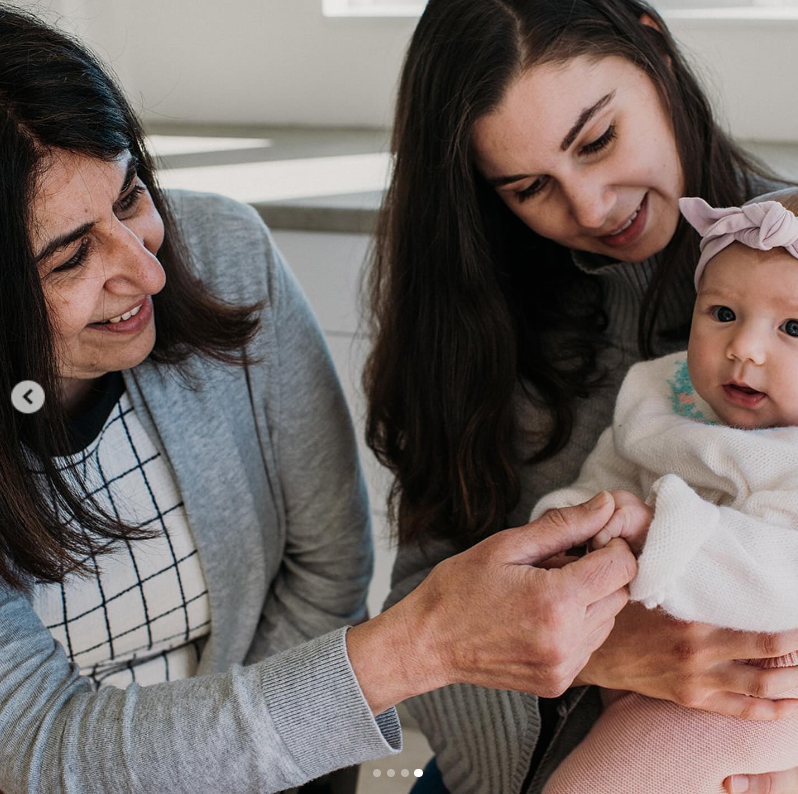
Kristy Adler with her mother and daughter in a post dated October 21, 2024 | Source: Instagram/kristyadlerart
Kristy described her mother's artistic legacy as the foundation of her own creativity. Her paintings reflect everything from their shared love of food to Susan's journey to Australia.
As a mother of two young girls, Kristy also shared that painting with them, though often chaotic, is a joyful and inspiring part of her life. Through her art, she continues to honor her mother's spirit and preserve the memories they created together.
On March 2, 2025, Kristy shared a video of her mother with her grandchildren and others, set to BGM Heaven's "Enjoyable Moments." She reflected on the lingering grief from a life that had taken a path far different from what she'd imagined.
In the caption, she opened up about the emotional toll of her mother's dementia diagnosis. Now, four years on, Kristy admitted that she still finds herself quietly crying behind her sunglasses whenever she sees a grandmother playing with her grandchild at the park.

Grandparents playing with their grandchildren outside | Source: Getty Images
It's a constant reminder of what her family lost and the bond her mother and daughters should have shared. Despite the pain, Kristy shared that painting has become her solace and a way to stay close to her mother.
She invited others who are grieving their own "what should have been" stories to connect with her, whether through comments or private messages, adding, "I'm always here to chat." Kristy also noted that real experiences often inspire her next pieces, and revealed she hopes to turn shared grief into something beautiful.
On her art website, Kristy revealed that she is a still-life oil painter based in Sydney. She's known for her original works that capture the intimacy of memory, the heart of motherhood, and the beauty in everyday moments.
Unable to share creative time with her mother as her illness is progressing, Kristy turned to painting as a way to reconnect. Each piece she now creates, whether it's lemons on a countertop, a simple cup of coffee, or flowers in a jar, carries layers of meaning for anyone navigating love, loss, and longing.
Her collection includes original paintings, custom commissions designed to capture the essence of a loved one, and made-to-order works inspired by earlier favorites. In tribute to her mother, Kristy donates ten percent of the profits from her work to the Dementia Australia Research Foundation.
Through her art, she offers more than aesthetic beauty; she offers stories you can hold onto. Here's what we know about her mother's condition.
More Information About Posterior Cortical Atrophy
According to the Cleveland Clinic, posterior cortical atrophy is a rare and progressive brain disorder that affects the brain region responsible for visual processing. It typically begins subtly with vision-related difficulties, such as trouble reading, misjudging distances, or bumping into objects, even when eye health appears normal.
Over time, the disorder can lead to broader cognitive issues, including memory loss. It's often associated with neurodegenerative diseases like Alzheimer's or Lewy body dementia. While there is no cure, treatment focuses on managing symptoms.
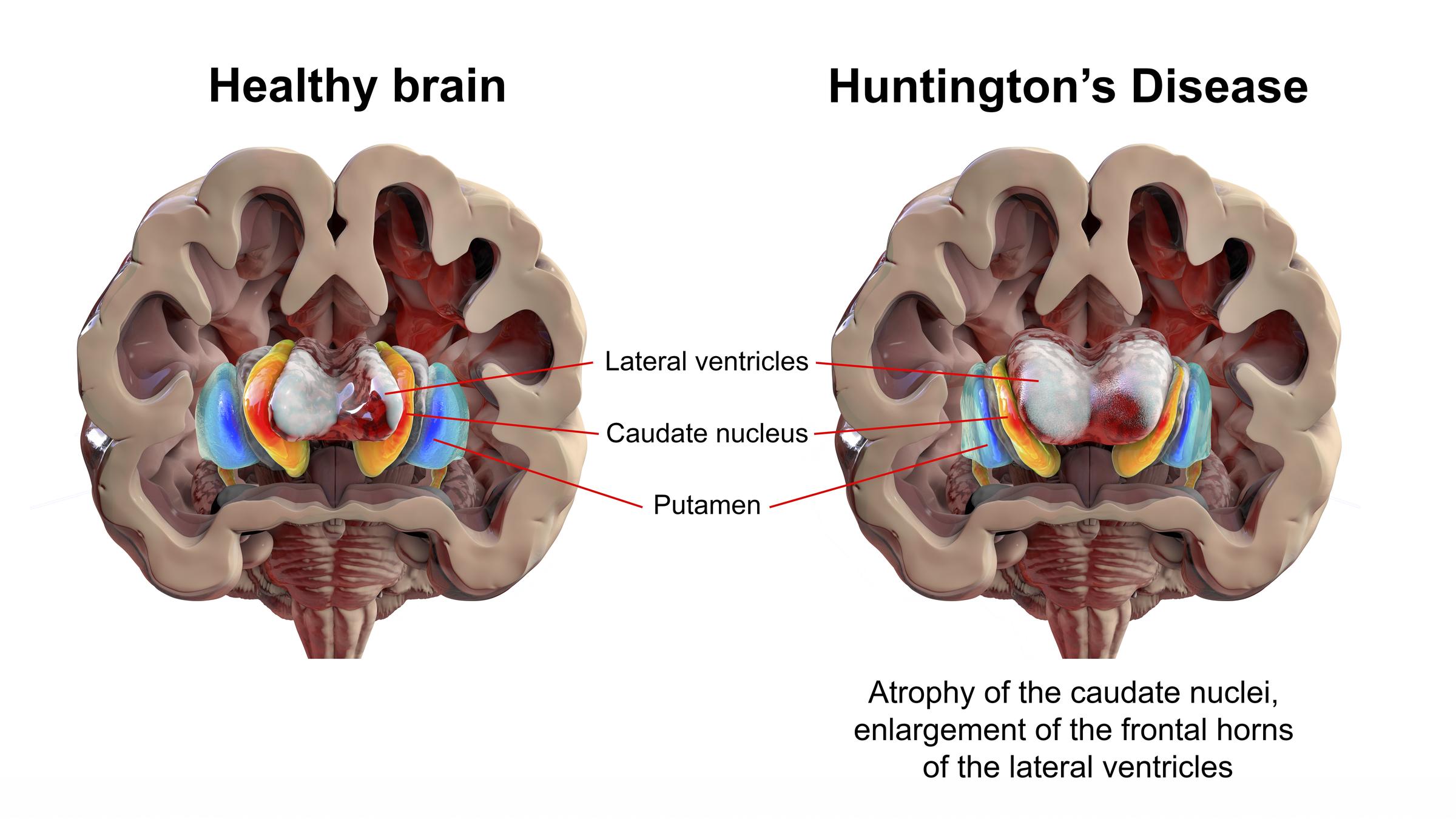
The dorsal striatum and lateral ventricles in a healthy brain and one with Huntington's disease (HD) | Source: Getty Images
Doctors aim to identify the root cause to offer targeted therapies. These may include medications and support strategies to help patients cope as the condition progresses. Symptoms of posterior cortical atrophy typically emerge in a person's 50s or 60s.
The disorder targets the posterior cerebral cortex, the parietal and occipital lobes, which interpret visual input. As brain cells in this region deteriorate and shrink, the brain gradually loses its ability to make sense of what the eyes see.
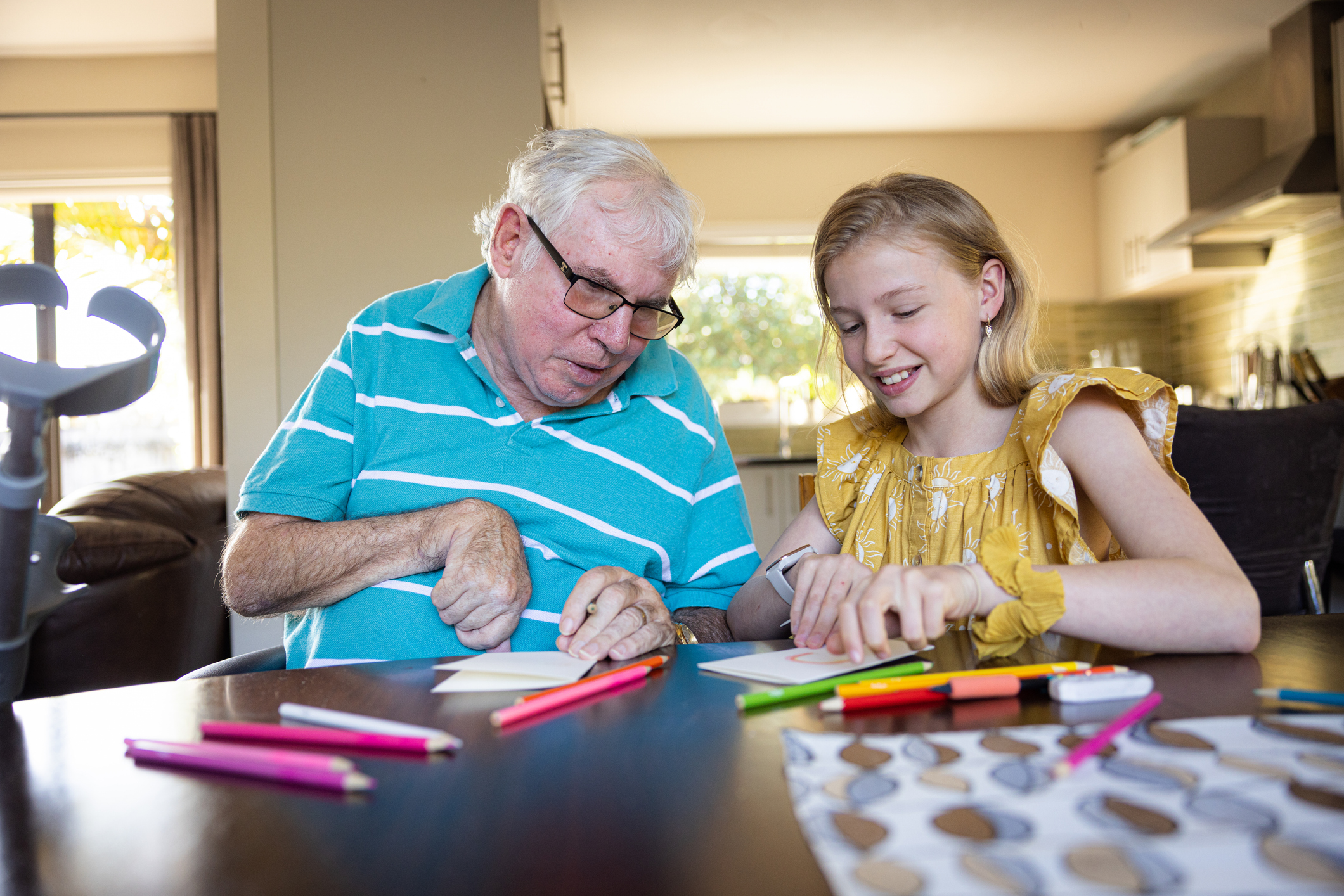
A senior man with dementia sitting at a table with colored pencils and young girl | Source: Getty Images
People with posterior cortical atrophy may experience:
- Difficulty reading: Text may seem to shift or jumble on the page. Lines move, words blur, and letters appear to slide off.
- Problems judging distances: Tasks like gauging stair steps or parking a car become challenging. Escalators may trigger anxiety due to the timing of foot placement.
- Confusion with directions: Differentiating left from right becomes hard, making it tough to follow instructions.
- Trouble recognizing faces, objects, or familiar places.
- Frequent bumping into objects: Misjudging space leads to walking into door frames, furniture, or walls—even when they're in plain sight.

A scientist viewing a patient's brain magnetic resonance imaging (MRI) scan for ageing and damage due to dementia and Alzheimer's disease | Source: Getty Images
- Difficulty with numbers: Even if you remember a phone number, you may not be able to find the digits on your keypad.
- Challenges using appliances or tools: Buttons and switches seem to disappear or appear in the wrong places visually.
In addition to these visual-spatial problems, anxiety is a common early symptom. Researchers believe this may stem from the brain's changing ability to process sensory and emotional signals or from a person sensing something is wrong without being able to explain it. Either way, sudden or unusual anxiety is a key diagnostic clue for healthcare providers.
The information in this article is not intended or implied to be a substitute for professional medical advice, diagnosis or treatment. All content, including text, and images contained on news.AmoMama.com, or available through news.AmoMama.com is for general information purposes only. news.AmoMama.com does not take responsibility for any action taken as a result of reading this article. Before undertaking any course of treatment please consult with your healthcare provider.
